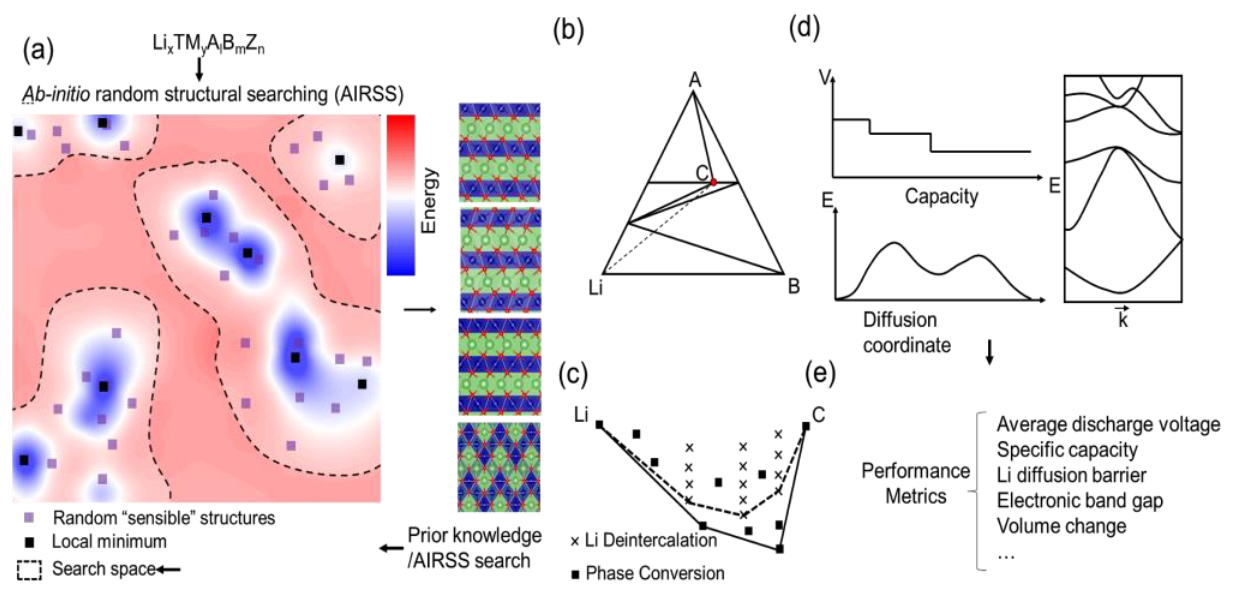
Submitted by J. Nelson on Tue, 15/06/2021 - 02:03
Above: schematic of the AIRSS-based framework for the discovery of new battery cathodes. In (a), the composition space potential energy surface is sampled with AIRSS, which allows the compositional phase diagram to be determined (b). Panel (c) depicts the Li-cathode pseudobinary convex hull, from which key battery metrics such as voltages, ion diffusion barriers and bandgaps can be calculated (d),(e).
A team of researchers at Cambridge and University College London have developed a computational framework for battery cathode exploration based on ab initio random structure searching (AIRSS).
Writing in the Journal of Chemical Physics, FutureCat researchers Dr Ziheng Lu and Prof. Chris Pickard at Cambridge, PhD student Ben Shires, and Dr Bonan Zhu and Prof. David Scanlon at University College London describe a computational framework for cathode materials exploration. This framework is based on the AIRSS approach, combined with a number of constraints which are used to narrow down the search space, such as chemically aware minimum interatomic separations, cell volumes, and space group symmetries.
The researchers demonstrate the efficacy of the approach by first exploring the well-known cathode materials LiCoO2 and LiFePO4, where the effect of different constraints is visualised using the SHEAP (Stochastic Hyperspace Embedding and Projection) dimensionality reduction algorithm. A multi-compositional search is then demonstrated for LixCuyFz, and finally a family of novel cathode materials based on the transition-metal oxalates is proposed.
Press release: Ab initio random structure searching empowers cathode material discovery for batteries
Ab initio random structure searching for battery cathode materials
Ziheng Lu, Bonan Zhu, Benjamin W. B. Shires, David O. Scanlon, and Chris J. Pickard

